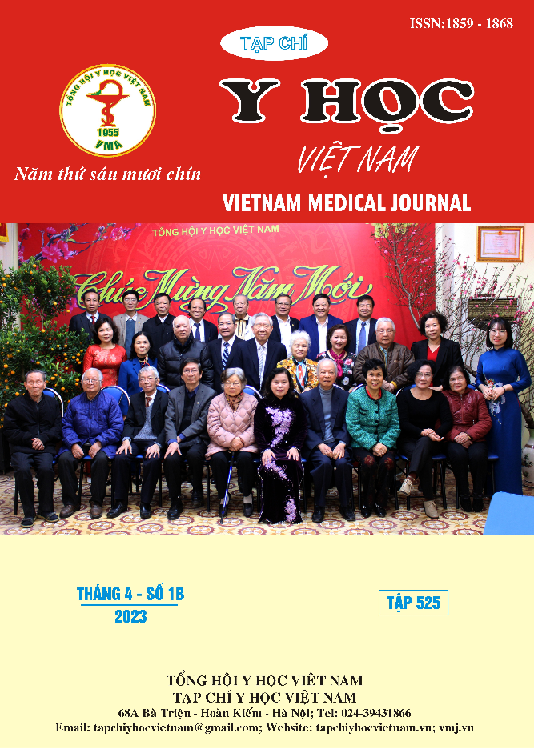CLINICAL AND SUBCLINICAL CHARACTERISTICS OF EMPHYSEMATOUS PYELONEPHRITIS AT CHO RAY HOSPITAL
Main Article Content
Abstract
Background and Objective: Emphysematous pyelonephritis (EPN) is an acute severe, necrotizing infection of the renal parenchyma and its surrounding tissues that is characterized by the gas formation within the renal parenchyma, collecting system, or perinephric tissue. This gaseous component, carbon dioxide, is produced from glucose by the bacterial fermentation. Although patients with EPN show relatively vague symptoms initially, but there is often a sudden deterioration in general condition, requiring early diagnosis and promt aggressive treatment. This study aimed in clinical and subclinical characteristics of EPN at Cho Ray hospital. Patients and Methods: Retrospectively descriptive case series of EPN was performed at Cho Ray hospital from January, 2011 to December, 2019. Results: From January 2011 to December 2019, there were 176 cases of EPN at Cho Ray hospital. The median age is 59 (51-67.5). The majority was female 143 cases (81.2%). Common clinical symptoms include flank pain 166 cases (94.3%) and fever 153 cases (86.9%). There were 127 cases (72.2%) had diabetes mellitus, and 109 patients (62%) had urinary tract obstruction. At hospital admission, there were 35 cases of consciousness disorder (19.9%), 68 cases (38.6%) of sepsis, 41 cases (23.3%) of septic shock and 71 cases (40.3%) of acute kidney injury. There were 52 cases (29.5%) of thrombocytopenia. Signs of EPN in echogram and KUB were reported in 22.8% and 13.7%, respectively. Class 3 and 4 EPN had 108 cases (61.4%). There were 45.5% and 50,6% of cases presented the infection on the left and right side, respectively. Seven cases (4%) had infection in both side kidney. Conclusion: EPN is an acute serious urinary tract infection required early diagnosis and promt aggressive treatment. CT scan is the gold standard in diagnosis of EPN. Management depends on individuals’ comorbidities and classification.
Article Details
Keywords
Emphysematous pyelonephritis(EPN), urinary tract infections, diabetes mellitus
References
2. Aboumarzouk O. M., Hughes O., Narahari K., Coulthard R., Kynaston H., Chlosta P., et al. (2014) "Emphysematous pyelonephritis: Time for a management plan with an evidence-based approach". Arab Journal of Urology, 12 (2), 106-115.
3. Huang JJ, Tseng CC. Emphysematous pyelonephritis: clinicoradiological classification, management, prognosis, and pathogenesis. Arch Intern Med. 2000;160(6):797-805. doi:10.1001/ archinte.160.6.797
4. Michaeli J, Mogle P, Perlberg S, Heiman S, Caine M. Emphysematous pyelonephritis. J Urol. 1984;131(2):203-8. doi:10.1016/s0022-5347(17) 50309-2
5. Muñoz-Lumbreras E. G., Michel-Ramírez J. M., Gaytán-Murguía M., Gil-García J. F., Morales-Ordáz O., Lujano-Pedraza H., et al. (2019) "Emphysematous pyelonephritis: A review of its pathophysiology and management". Revista Mexicana de Urología, 79 (3), 1-12.
6. Pontin A. R., Barnes R. D. (2009) "Current management of emphysematous pyelonephritis". Nat Rev Urol, 6 (5), 272-279.
7. Schainuck LI, Fouty R, Cutler RE. Emphysematous pyelonephritis. A new case and review of previous observations. Am J Med. Jan 1968;44(1):134-9. doi:10.1016/0002-9343(68)90245-3
8. Shokeir AA, El-Azab M, Mohsen T, El-Diasty T. Emphysematous pyelonephritis: a 15-year experience with 20 cases. Urology. Mar 1997;49(3):343-6. doi:10.1016/s0090-4295 (96)00501-8
9. Somani B. K., Nabi G., Thorpe P., Hussey J., Cook J., N'Dow J. (2008) "Is percutaneous drainage the new gold standard in the management of emphysematous pyelonephritis? Evidence from a systematic review". J Urol, 179 (5), 1844-1849.


